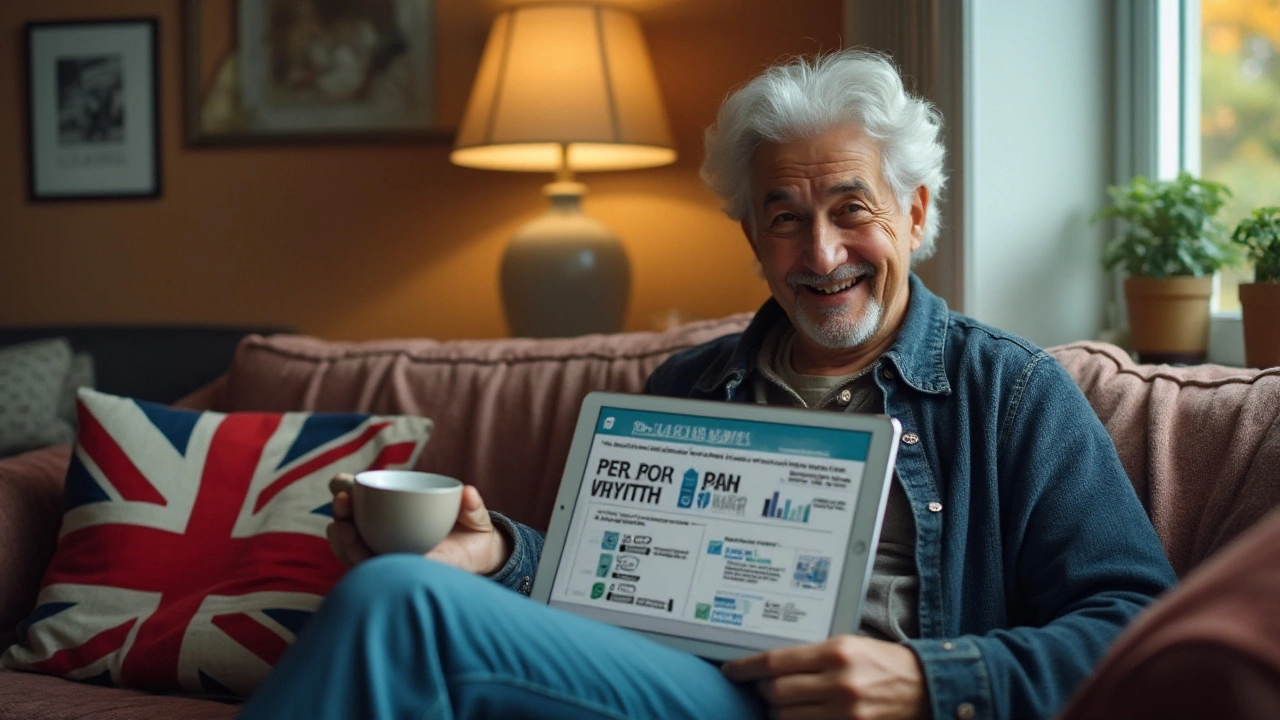Living with student loans can feel like a heavy burden, but for many, loan forgiveness offers a hopeful path to financial relief. The journey to forgiveness, however, isn't always straightforward. Instead, it's a winding road filled with different paths that depend on your circumstances.
To know if your student loan might be forgiven, it's essential to understand the various forgiveness programs available and the criteria you must meet. This isn't just about figuring out a few checkboxes; it's about aligning your career choices, financial planning, and sometimes even where you choose to live or work.
In the sections below, we'll unfold the layers surrounding student loan forgiveness. We'll guide you through the types of forgiveness programs available and how each one's unique requirements can affect your eligibility. Additionally, we'll offer insights into the practical steps you need to take to ensure your loans can be forgiven, providing tips that could save you both time and money.
- Types of Student Loan Forgiveness
- Eligibility Criteria
- Application Process
- Important Tips and Considerations
Types of Student Loan Forgiveness
Understanding the landscape of student loan forgiveness begins with recognizing the different types offered by both federal and state programs. Each program addresses specific needs and career paths, providing targeted relief for those who qualify. The ultimate aim of these programs is not just to alleviate financial burdens but also to encourage skilled professionals to contribute to sectors that bolster community and national development.
Perhaps the most well-known program is the Public Service Loan Forgiveness (PSLF). This program is designed to help those who dedicate their careers to public service, including roles in government and nonprofit organizations. To qualify, borrowers must make 120 monthly payments under a qualifying repayment plan while working full-time for a qualifying employer. Success, in this case, hinges on following meticulous record-keeping and ensuring every employment period is properly certified.
Another prominent program is the Teacher Loan Forgiveness, tailor-made for educators working in low-income schools or educational service agencies. This program provides up to $17,500 in loan forgiveness for qualified teachers who have worked for five consecutive years. It serves as an incentive for educators to make a difference where they're most needed. The door is open, but it's worth noting that this program is separate from PSLF, and the two cannot be combined for the same qualifying service period.
According to Congress reports, "The Teacher Loan Forgiveness program is critical in addressing teacher shortages and ensuring high-quality education for all children regardless of their socioeconomic status."
Beyond these, there are varied forgiveness opportunities for those with federal Perkins Loans through the Perkins Loan Cancellation and Discharge program. Certain professions, such as nurses, law enforcement officers, and firefighters, are eligible for full cancellation. This aims to reward public service commitment in roles that directly impact the community's safety and well-being.
In recent years, the Income-Driven Repayment (IDR) Plan forgiveness has gained attention for offering a path to relief after about 20-25 years of qualifying payments. Though not as immediate as other options, it provides a long-term strategy for borrowers whose loans are significantly burdensome relative to their income. The advantage here stretches beyond forgiveness, as monthly payments are capped at an affordable percentage of discretionary income, offering breathing room for daily living.
A less frequently discussed opportunity is state-specific forgiveness programs. These vary widely but often target professions in health care or STEM fields. For example, some states offer loan repayment assistance for doctors or dentists who commit to working in rural or underserved areas. These initiatives, although less universally applicable, provide invaluable support to those relocating to meet state-specific needs.
With these diverse paths available, navigating the maze of loan forgiveness programs can seem daunting. Understanding one's unique career trajectory and aligning it with the appropriate program can lay the groundwork for significant financial relief. Keeping track of relevant deadlines, eligibility requirements, and nuances becomes an essential aspect of managing student debt effectively.

Eligibility Criteria
Understanding the criteria for student loan forgiveness is crucial because it determines your path to financial relief. Eligibility often varies depending on the specific program you are interested in, but a few common factors typically influence most decisions. It's essential to first comprehend whether your loan type qualifies as many forgiveness programs are only applicable to certain federal loans. Private loans, for instance, generally do not qualify, which means you'll need to explore different avenues for relief if your debts fall under that category.
Many forgiveness programs also look at the kind of work you're doing. Particularly in the case of Public Service Loan Forgiveness (PSLF), your employment plays a pivotal role. This program typically seeks individuals who contribute to the betterment of society by working in government or non-profit roles. Not only does the type of employment matter, but so does the term of service. An individual needs to have worked full-time in a qualifying job for a minimum of ten years, often while making regular payments on the eligible loans, before they can even consider being forgiven. It's a long commitment, but for those willing to put in the time, the payoff can be significant.
Income-based programs constitute another significant segment of the loan forgiveness landscape. Here, your salary compared to family size and federal poverty guidelines takes the spotlight. The Income-Driven Repayment (IDR) plans are designed to make your payments more manageable, but they extend the loan term, often up to 20 or 25 years, at which point any remaining balance may be forgiven. However, be cautious, as the forgiven amount might be taxable under current regulations. "It's a safety net for borrowers whose incomes are too low to afford standard repayment," says a spokesperson from the Federal Loan Borrowers Assistance Project.
The process of forgiveness is more than just checking a list; it requires consistent documentation and interaction with your loan servicer.
Also, the Teacher Loan Forgiveness program provides relief for educators serving in low-income schools. While teaching might not directly pay off all student debt, it rewards those choosing to contribute to education in underprivileged areas, typically forgiving up to $17,500 on qualifying loans after five consecutive years of full-time teaching. Again, it ties back to serving a greater societal function while ensuring one can balance their debt responsibilities. Each of these programs has specific requirements, and understanding these in detail can significantly improve your chances of having your loans forgiven.
An often overlooked but critical criterion for eligibility is keeping up with the loan payments under the chosen program terms. Delinquencies or defaults can disqualify borrowers from many forgiveness plans. Moreover, timely and complete submission of required documentation and certifications at regular intervals cannot be emphasized enough. Mistakes or oversights can upend years of diligent planning, and staying organized is non-negotiable in the pursuit of loan relief. Document everything, from pay stubs confirming employment to copies of annual submissions, to safeguard against administrative errors that sometimes occur with loan processing.

Application Process
The application process for **student loan forgiveness** can seem like a daunting task at first, but understanding the necessary steps can make the whole procedure more manageable. First and foremost, it's important to identify which forgiveness program applies to you, as each has its distinct application requirements and timelines. Typically, borrower eligibility is matched to specific criteria, such as working in public service, teaching in underserved communities, or participating in an income-driven repayment plan for a structured number of years.
Once you've established which program aligns with your circumstances, gathering the needed documentation is your next step. For instance, those seeking **loan forgiveness** through the Public Service Loan Forgiveness (PSLF) program must submit a record of their employment metadata, proving their full-time status with a qualified employer. It's critical to maintain these records accurately since any discrepancies can lead to delays or denials. The Employment Certification Form (ECF) is one key document that must be completed annually or whenever you change jobs. This keeps your progress towards forgiveness up to date and confirms your loans are on track for potential forgiveness.
Next, for programs requiring proof of payments, such as the various Income-Driven Repayment (IDR) plans which may lead to forgiveness after 20 or 25 years, maintaining meticulous records of your loan payments is essential. Many borrowers opt to set up automatic payments to ensure they never miss one, preserving their eligibility. Moreover, staying proactive by closely monitoring one's loan balance and payment history through their loan servicer’s online portal can prevent any oversights. A great aspect of modern finance is that these portals often provide a self-service approach where borrowers can track their progress toward forgiveness, providing an added layer of transparency.
Completing the necessary forms might sound straightforward, but it is recommended to read all instructions thoroughly and more than once. Any oversight might cause delays, as missing information or improperly filled sections are common reasons for application rejections. Remember, patience is key here—government processing times can be prolonged.
“The meticulous execution of documentation can significantly impact the rapid progress of an application”.This quote captures the essence of an organized approach from a loan advisor at the National Consumer Law Center, emphasizing the need for accuracy and preparedness.
The final step in the **application process** is submitting the forms and patiently waiting for feedback. It's vital to keep a close eye on any communications from your loan servicer during this period. Often additional information might be requested or clarification on certain aspects of your application. Ensure your contact details are current with your servicer to avoid missing out on any important notifications or updates.
In conclusion, while the path to **student loan forgiveness** is complex, it is navigable with careful planning and attention to detail. Staying informed about updates or changes in policies, understanding what is required from you, and maintaining open communication lines with your loan servicer are tantamount to successfully seeing your application through to fruition.

Important Tips and Considerations
Embarking on the journey of student loan forgiveness is much like setting out on a long hike. It's vital to pack the right tools, have a map, and know your destination. Before you can successfully reach forgiveness and wipe out your debt, you'll need to understand the ins and outs of what lies along the path. Here are some pivotal tips and considerations to guide you through this terrain.
Stay Informed and Updated
Changes in policy can impact your loan forgiveness eligibility or the process itself. Those changes can sneak up on you from unexpected directions, like a surprise thunderstorm on a summer day. Make it a habit to check for updates regularly on the official Federal Student Aid website or through trusted financial news sources. Being proactive can help you avoid any unpleasant surprises down the road. One of the most important things is keeping your contact information updated with your loan servicer to receive the latest communications."Knowledge is power, but applied knowledge takes you to the next level." — Jim Kwik
